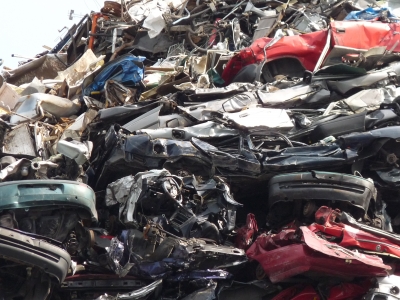The report highlights:
- Industry level challenges, commitments and actions related to: climate action, responsible sourcing and co-products
- Steel companies’ initiatives and actions: what steel companies are doing individually to address our global industry and societal challenges
- Sustainability performance: continued reporting on the industry’s eight global economic, social and environmental indicators
- Steel solutions: how steel is being applied in versatile and innovative ways to provide sustainable (and sometimes surprising) solutions for our everyday lives
- The steel value chain: what we need to make steel and how society uses it
Edwin Basson, Director General, worldsteel, said, “the global steel industry shares society’s challenges and concerns – from climate change and urbanisation to ensuring long-term economic growth and responsible management and sourcing of resources, we as an industry and as individual steel companies are being proactive in addressing these challenges on many different fronts. We do not yet have all the answers, but we are committed to engaging and collaborating with our stakeholders to find the right solutions to help meet society’s needs in a sustainable way.”
Steel companies from around the world have been voluntarily reporting on up to eight sustainability indicators every year since 2004. These indicators provide a systematic way of measuring key aspects of the industry’s economic, environmental and social performance on a yearly basis. In 2018, a total of 97 steel organisations worldwide participated in the 2018 data collection, representing 960.8 Mt or 56.9% of global crude steel production in 2017.
Results for our eight steel industry indicators for the 2017 fiscal year are as follows:
Environmental sustainability
1. Greenhouse gas (GHG) emissions: An average of 1.83 tonnes of CO2 were emitted for every tonne of crude steel cast
2. Energy intensity: 20.0 GJ of energy was used per tonne of crude steel cast
3. Material efficiency: 96.3% of materials used to make crude steel were converted to products and co-products.
4. Environmental Management System (EMS): 96.8% of employees and contractors worked in EMS-registered production facilities.
Social sustainability
5. The industry’s Lost time injury frequency rate (LTIFR) was 0.97 injuries per million hours worked.
6. Employees (at both production and non-production facilities) received an average of 6.1 training days per year.
Economic sustainability
7. in new processes and products (capital expenditure and R&D) was 5.9% of revenue
8. Economic value distributed (EVD) was 97% of industry revenue
The Sustainable Development Charter affirms the commitment of worldsteel member companies to adopt sustainability as a core business practice, vital to a company’s licence to operate. Signing it is the first step in participating in the Sustainability Champions Programme, which worldsteel runs firstly to encourage its members to strive for excellence and secondly to recognise those members that have made outstanding contributions and an outstanding effort.
To be recognised as a Sustainability Champion, members must provide data on six of the indicators above (indicators 3 – 8) and also submit Life Cycle Inventory (LCI) data to worldsteel’s data collection programme.
Members must also publish a sustainability-related report and must be shortlisted in one of the five categories of the worldsteel Steelie Awards (Innovation of the year, Excellence in sustainability, Excellence in Life Cycle Assessment, Excellence in education and training, and Excellence in communications programmes) or must feature in the Safety and Health Recognition Programme.
In 2018, 71 member companies signed the charter, representing 755 Mt or 45% of global crude steel production in 2017.










